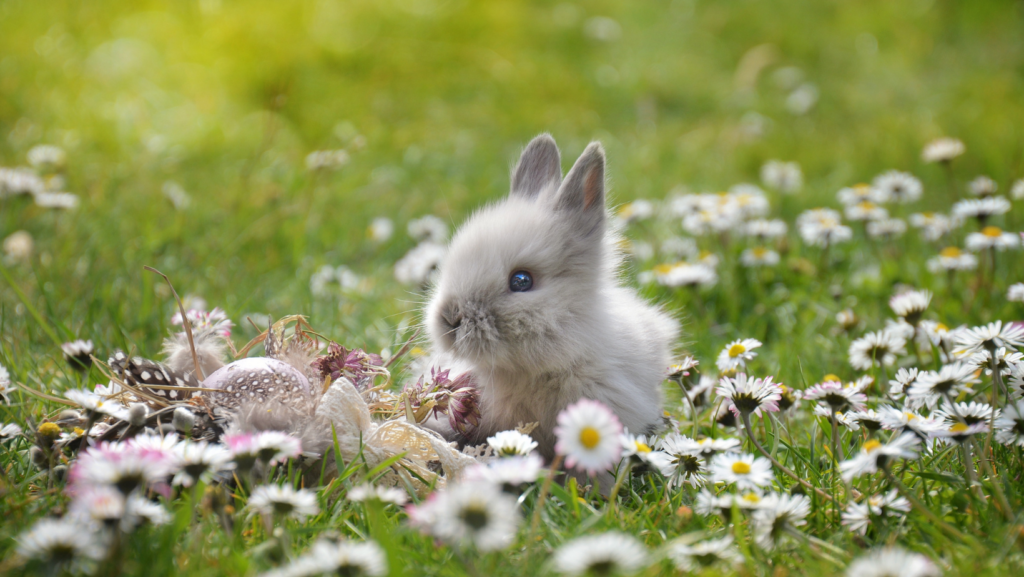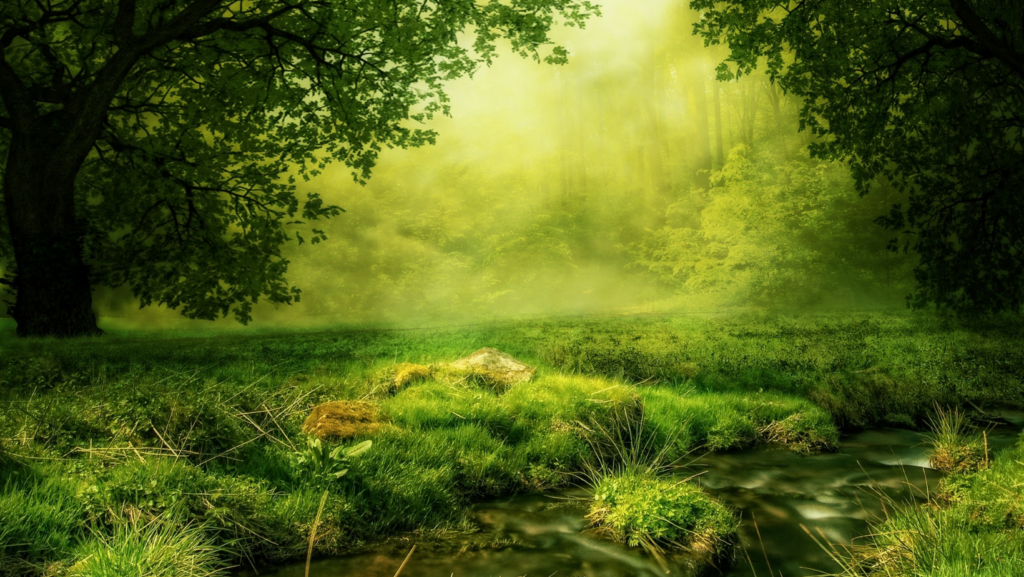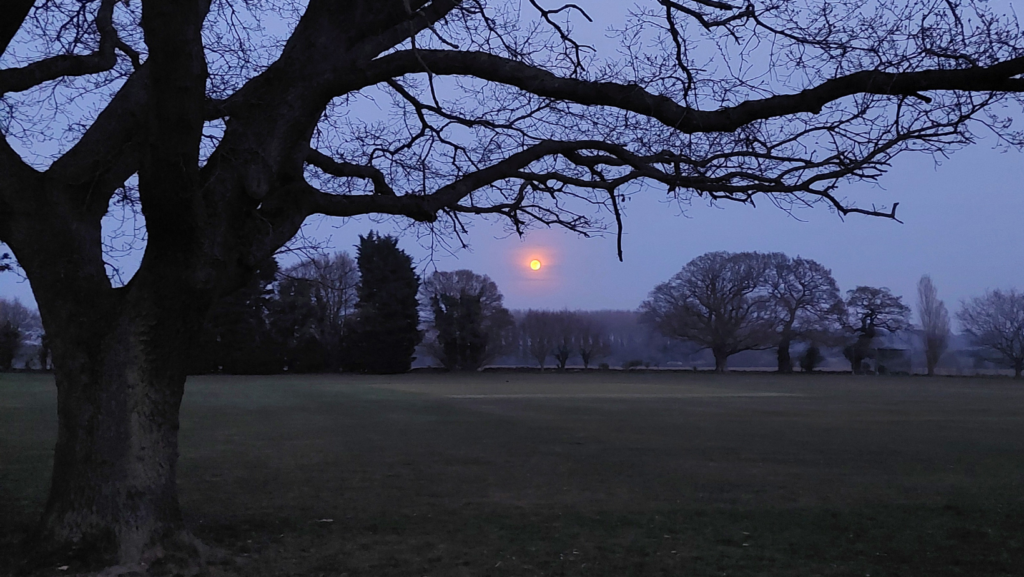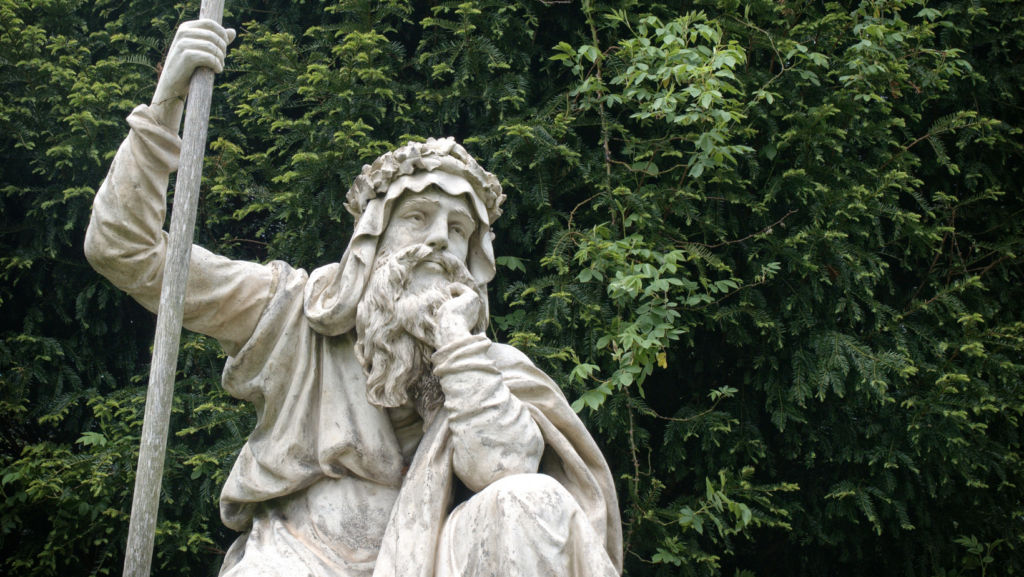In today’s Christian influenced Britain, we associate this time of year with Easter, the celebration of the rebirth of Jesus after his execution at the hand of the Romans. Today, some Christians will argue that it has been far too commercialised with chocolate eggs, the easter bunny and hot cross buns. Ironically, these are symbols that are far more associated with the predecessor to Easter, Ostara or The Spring Solstice. Before Christianity stormed its way across Britain in the 9th century, our festivals (and those celebrated by the Iceni tribe here in East Anglia) were closely linked to nature and the changing of the seasons. As people at the time relied entirely on the natural world, it made sense that this would be at the centre of their belief systems. Both the original festivals and the later Christian festival have their symbology in ‘rebirth’ and it’s likely the Christians stole many pagan parts of the religion in order to attract pagans to their own religion, much like we see in Christmas.

Bronze and Iron Age Britain would have looked incredibly different from today. Populations were far smaller. In the early Bronze Age, the population of Britain is thought to have been as low as 20,000 people (there are 144,000 people living in Norwich alone today for comparison) and raised to just over a million people by the Iron Age in 800BCE. Most of the landscape consisted of deep, ancient forests of Oak and Beech trees with grid-like farms being found around bodies of water. People lived in round houses made of “wattle and daub,” a form of construction using reeds, timber and a plaster made of mud and lime. Some settlements were around hill forts, large collections of properties built surrounded by enormous earthen embankments. Rivers were wider and wilder, with beaches rather than banks and you could walk for days without encountering another person. Lynx, wolves, bears, wild boar, elk and large oxen-like creatures called aurochs would be wandering the landscape throughout our early history and wildlife would have been far more dangerous.
As farming was the priority for the Celtic people, you would need to be incredibly in tune with the natural world around you. Seasons dictated how well and what you would eat and natural resources were incredibly important. You had to account for the wildlife in the area at the time, the water levels available each season, and what plants would grow well in what places. This was all done without the scientific knowledge we utilise today. In classic human fashion, if we didn’t understand something, we made up an explanation for it and religion reflects this. Around Spring, for example, the natural world, which appeared dead to our ancestors during the winter period, reawakens, and life begins to burst forth once more. To the Celts, this was a sign that the gods and spirits had returned to the natural world and that food was about to become more abundant. This is why it was very important, spiritually, for the Celts and why they celebrated the Spring Equinox.
Celtic beliefs were centered around powerful spirits believed to exist in the natural world. Areas that were naturally secluded but beautiful, such as waterfalls, lake shores or glades in woodlands were believed to be places where these spirits would gather and so were often places of worship. Evidence such as pottery, sacrificed weapons and animal and human bones support this. Some sources support the idea that it was believed these spirits were both ancestral and also natural, also illustrating our connection to the natural world.

What is an Equinox?
The equinoxes are the heights of the four seasons. The Summer equinox is known as the longest day to us in modern times, and the Winter equinox as the shortest. The Spring and Autumn equinoxes are usually at the beginning of Spring and Autumn and mark the coming in of those seasons. All four were worshipped with solstices by ancient people as it would mark a change in lifestyle for the year. Summer was a time of light and heat and was associated with fire, Autumn was about the harvest and a time of plenty, Winter was associated with death and spirits and Spring with new life and the warming of the world as winter faded. As in Spring, we see new life in the form of buds on trees, plants starting to grow, animals breeding and awaking from hibernation and waters filling with fish again. It marked a time for the Celts where they could start thinking about the times of plenty after the lean months of Winter.
The solstices are likely to have been important to people since the earliest humans and are the reason why, in Britain, we see henges like Stonehenge and Woodhenge. They align perfectly with the sun or stars at the equinoxes and were most likely places of worship to those early people during those festivals. With farming and hunting at the core of their society, they marked the times when work would change. For farmers, Spring was the time for planting, Summer was for the growth and maintenance of the crops (and gathering of foods from the natural landscape) and Autumn was when they were harvested. Winter was the lean time, with nothing growing, people had to rely on the food they’d stored as even hunting became harder during the Winter months. This is why Spring held such significance as it was a return from these harder times to easier ones. Having said this, Spring would likely have been difficult in terms of food, as your Winter stores would be running low and you still had to wait for crops and natural fruits and foods to grow.

What is Ostara?
Ostara or Eostre, is a festival that was born among early Germanic people but would have been celebrated across most of Northern Europe. It takes its name from the ancient goddess Eostre who is mentioned by Bede (a chronicler from the 8th century) and is portrayed as a deity of fertility, renewal and spring. Notice the name is similar to the word “Easter” which is most likely where the name comes from.
Eostre is often portrayed with a hare (and sometimes she is depicted as having the head and shoulders of a hare) and sometimes depicted as carrying eggs. Both are symbols of fertility. Hares are known for having large litters and being able to conceive even while pregnant and eggs would start to be found in grassland areas at springtime so both were prominent in the lives of the Celtic people. It’s no accident that, today, we have the Easter Bunny and Easter Eggs as both were taken from these Celtic beliefs. In Northern German traditions, children are told during Easter Egg hunts that it was the goddess Eostre herself, in hare form, laying the eggs around for children to find! Some versions follow an old traditional story in which the goddess turned a bird into a hare and the hare, every Easter, lays eggs to remember its time as a bird and as a tribute to Eostre.
Eostre has also been associated with (and sometimes mistaken for) the Norse goddess Freyja, who, like Eostre, has associations with fertility and Spring. However, there are many key differences between the two. One of the main links between the two is due to the fact that both are depicted with chariots being drawn by animals. Although Eostre is depicted with hares drawing her chariot, Freyja’s is traditionally depicted being drawn by Norwegian Forest Cats, a large species of cat similar to a Maine Coon. Also, Freyja has more associations with battle, as the leader of the Valkyries, and with her own hall for the glorious dead who died fighting, she was often invoked before war, whereas Eostre doesn’t seem to have any associations with battle from what we can tell.
Imbolc: Another Spring Festival
Another Spring festival associated with ancient Britons is that of Imbolc (also known in more recent times as Candlemas). Mostly celebrated among Gaelic people such as those found in Ireland, Scotland, Wales, Cornwall, Devon and Northern England, it was a celebration of the beginning of Spring leading up to the solstice. It’s thought that it was around February 1st or 2nd that the festival took place, coinciding with the birth of the first lambs. It was a celebration of the lengthening of the days and light and of new birth associated with Spring. As a result, the main way of celebrating was by lighting bonfires and it was believed that, by doing so, they were cleansing the land ready for the first crops to be sown at a later date.

The main goddess associated with the festival was Brighid (Ireland) or Brigantia (England). She was the goddess of healing, poetry, smithing, fertility, domesticated animals and the natural world. During Imbolc, her blessing was sought for homes and livestock to ensure a good year to follow. Brighid’s name translates to “High One” or “Exalted One” and was portrayed in Irish pagan beliefs as the wife or daughter of the chief god so was very important. Around the 5th century, in order to try and Christianise the Irish, the church made Brighid into St Brigit who became the patron saint of the home.
Another figure associated with Imbolc is the “divine hag,” Cailleach (known as Beira in Scotland). She is a figure thought to have brought about extreme weather such as storms but is mostly associated with Winter. Depicted as an old woman, she was often portrayed wearing a cowl and hood and slipping between trees in wooded areas. She was supposed to carry a large staff which would freeze the ground wherever it touched it and her enemy was Spring, so she often was thought to have “fought the Spring” to try and prolong her season of Winter. She was sometimes depicted as having one large eye like a Cyclops, blue or grey skin, with “rust coloured” red teeth. Her clothes were said to be adorned with skulls and could leap across mountains and ride storms. Some legends say that the moment Spring arrives, Cailleach turns to stone and only changes back when Autumn comes about. On Imbolc, as the Winter starts to die, she spends the day wandering the woods, collecting firewood to see out the rest of the season. It is thought that if the weather on Imbolc is fair and sunny, it was Cailleach making it brighter to find more firewood, and therefore Winter was going to last longer. If the weather was foul, it was a good thing as it meant Winter would disappear far more quickly!
How did the Celts celebrate Ostara and Imbolc?
We know that these celebrations would have been incredibly important in the annual lives of the Celtic people but sadly, we know very little about how they would have celebrated them. The only people who may have been able to accurately record what happened would have been the Romans, but they had no interest in the religions of the Celts or would go as far as to demonise them as barbaric. As a result, they often didn’t write about the religious practices of the Britons or, if they did, it was to exaggerate the aspects of them that the Romans disagreed with. As a result, we can only use what little we can read between the lines and what we can discern from archaeological evidence.
Celtic spiritual leaders were the druids. Like with most aspects of Iron Age culture, we know little about them, apart from the fact that they were accomplished in herblore and medicine and were seen as able to commune with the spirits and gods in the natural world around. They were the healers in Celtic society and would be sought out for advice in times of need. They would act as political advisors, legal authorities and lore keepers. Some scholars also hypothesise that they would also be accomplished in navigating celestial bodies and would interpret the stars as part of their rituals. They were a keystone in Celtic culture. The Romans took a particular dislike to druids and started to suppress and execute as many as possible. By the 2nd Century CE, they disappeared from written records entirely.

Fire would have been an incredibly important part of any ceremony. We know through archaeological finds that sometimes goods like food or crafted items were burnt as offerings to the gods and a good number of the tribes around England used cremation as their way of burial. As a result, we can assume that great fires would be lit in order to celebrate the lengthening of the days. Certainly, Imbolc, as a festival of light, would have utilised fires to “cleanse the land” of the darkness in order to welcome in Spring and later Summer. Also, as food carried significant spiritual weight for early tribal people, feasting would have made up a large part of ceremonies as well.
We know that a large part of their spiritual beliefs lay in sacrificing objects to gods or spirits, but these have mostly been found to be material objects such as jewellery, weaponry or pottery. Some animal sacrifice is evident, and it seems as though in Britain, horses and dogs were favourites, likely due to their religious significance. Horses were seen as symbols of strength and war, so they were likely sacrificed before or after battle to ask for victory or give thanks for it. Dogs were seen as symbols of loyalty and companionship and as protectors, so they were sacrificed and buried near gravesites or spiritually important locations the Celts wanted to protect.
Swords were a favourite for “sacrifice.” Many have been found deposited into bodies of water around Europe. They were either lowered in whole and sometimes freshly made, having never been owned or used, or the sword was that taken from a fallen enemy or a noble warrior. Sometimes, the sword was ritually “killed,” which was when the blade was folded so that the tip of the sword pointed toward the hilt, which made it useless to a warrior. Swords held great significance to Celtic people. Quite often, they were handed down generationally and it is thought that they were believed to hold the souls of the dead or of a family’s ancestors. Some even have anthropomorphic hilts shaped like human figures that might support this claim (such as the one found in Shouldham in Norfolk that is currently on display in the Norwich Castle Museum). As such, the destruction of a sword, a highly valuable and expensive object, was a strong message to the gods that you needed their help or a deepfelt thanks. It is possible that another thought process for this was the “removal” of an important sword. As a gift from the gods, it might be the sword was being “returned” to the gods so that it wouldn’t fall into the hands of humans again (mirrored in the Arthurian legends when King Arthur has Excalibur returned to the Lady of the Lake upon his death.)
An extremely controversial topic in regards to Celtic spiritual practice is human sacrifice. Although contemporary Roman scholars would have us believe that this was a common practice, archaeological evidence seems to suggest otherwise. Those bodies exhumed who might possibly be the victims of human sacrifice are hard to differentiate from murder victims. Only a few seem to be possibly more ritualised in their killing, such as the body of a young woman found in Dorset. She was discovered lying on her front, her hands having been tied, and on top of a platform made of animal bones. She had been killed by a single stab wound to the back of the neck but also showed signs of previous trauma with a broken rib. The finding of mummified remains in peat bogs around Britain and Northern Europe also point toward possible sacrifices, but these are a matter of fierce debate. Some scholars argue that the “threefold murder,” the fact that the bodies are often found to have suffered a severe blow to the skull with a blunt object, strangulation with a cord, and eventually having their throat cut, points toward a more ritualistic killing rather than a murder.
So as you can see, there were many different ways to celebrate the spring festivals! We don’t recommend the human sacrifice but now you can tuck into your easter egg and see images of the Easter bunny and know they carry more meaning that we might give them credit for!
Reference and Sources
Bronze and Iron Age Environmental research
Wildlife trust: Extinct Fauna of England
Modern interpretation of celebrating Ostara